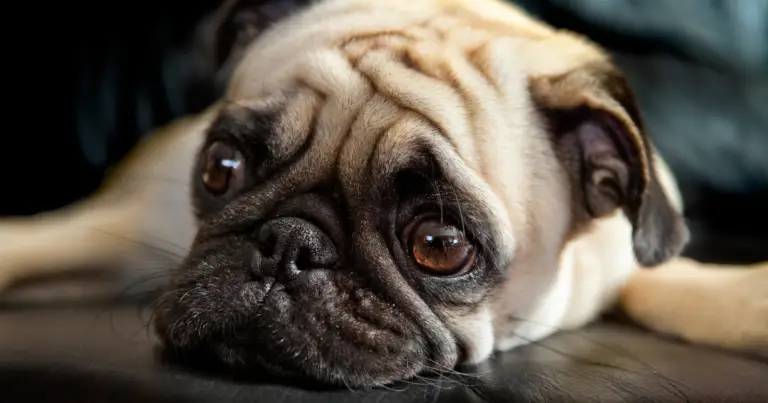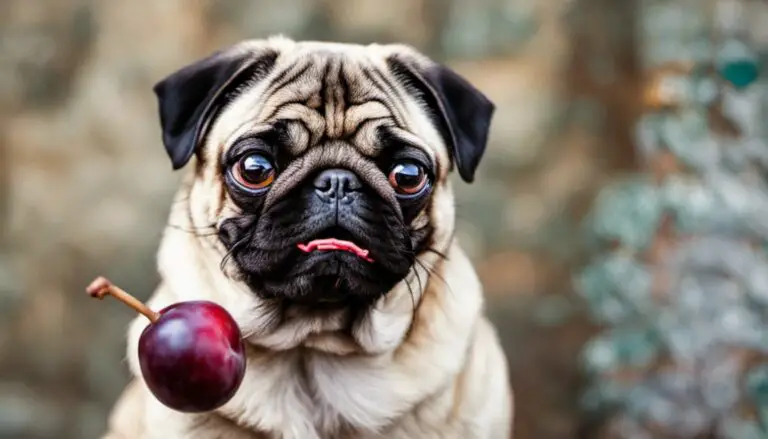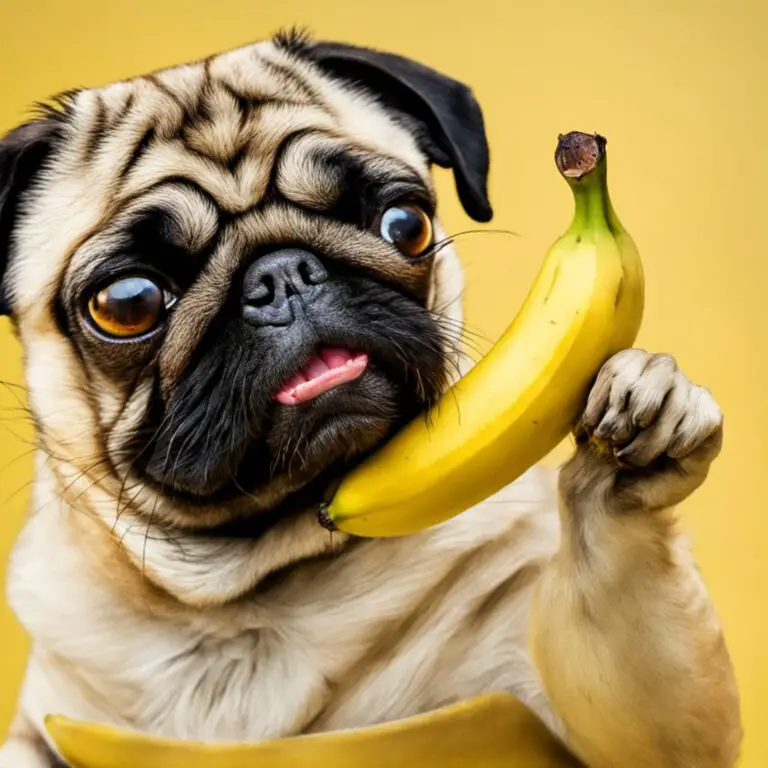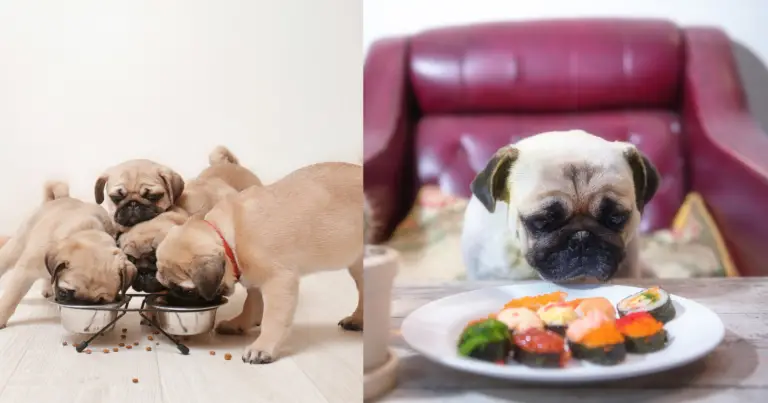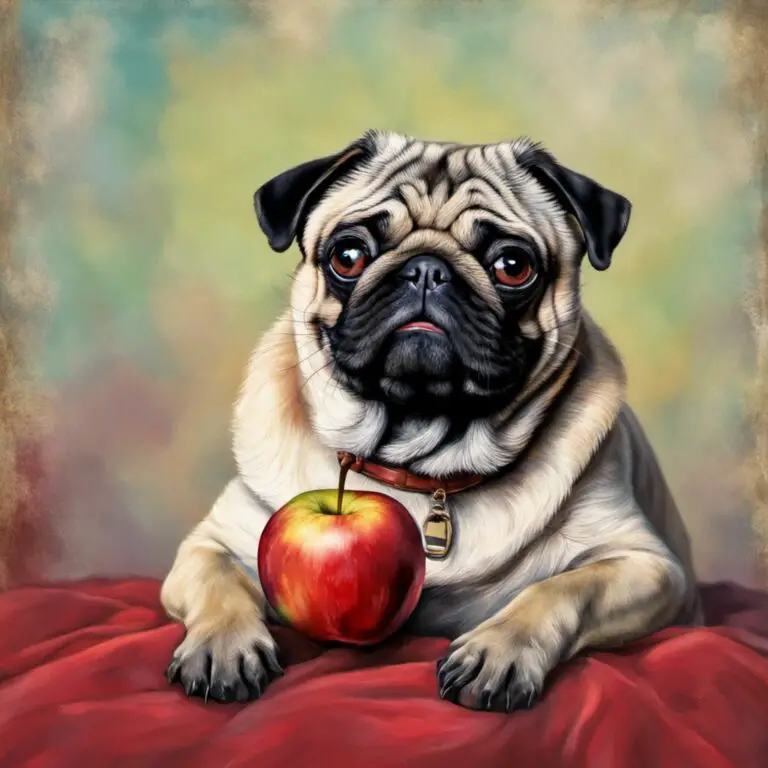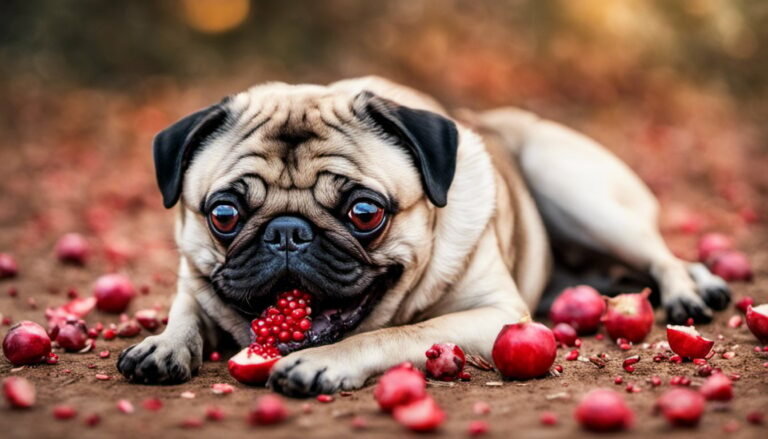Can Pugs Eat Cherries? Essential Facts for Pug Owners
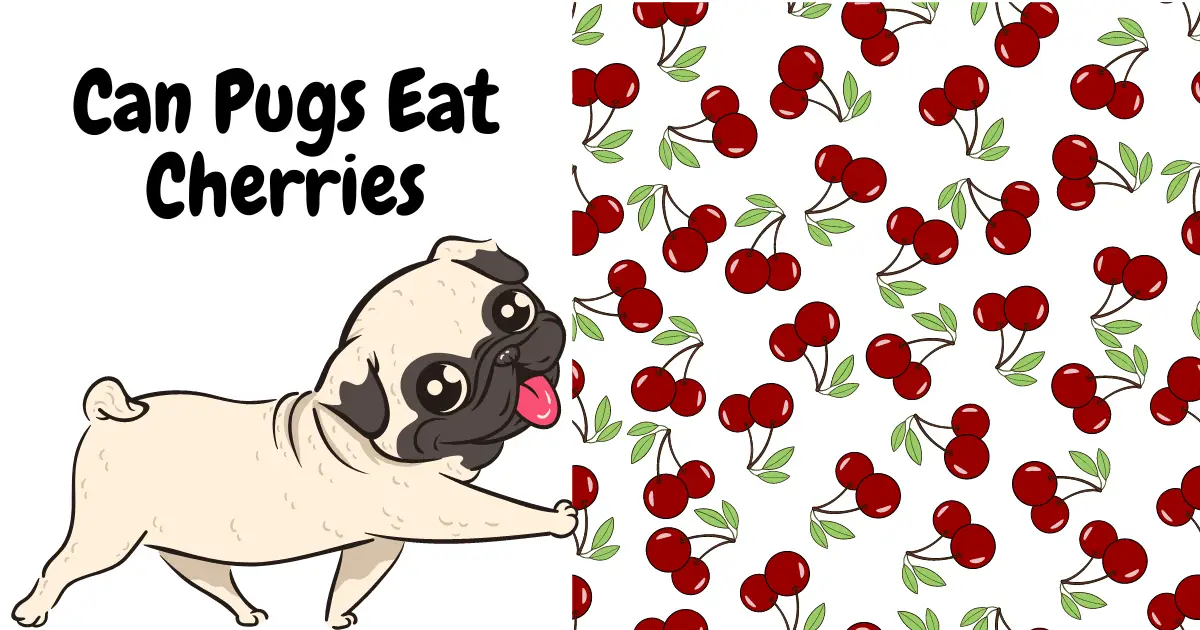
As a pug owner, you might wonder, Can Pugs Eat Cherries? While fruit is often a nutritious and enjoyable snack for dogs, knowing which fruits are safe for them to consume and which could be harmful is essential. Cherries, in particular, can be a topic of concern for pet owners, and understanding the potential risks and benefits is crucial before incorporating them into your pug’s diet.
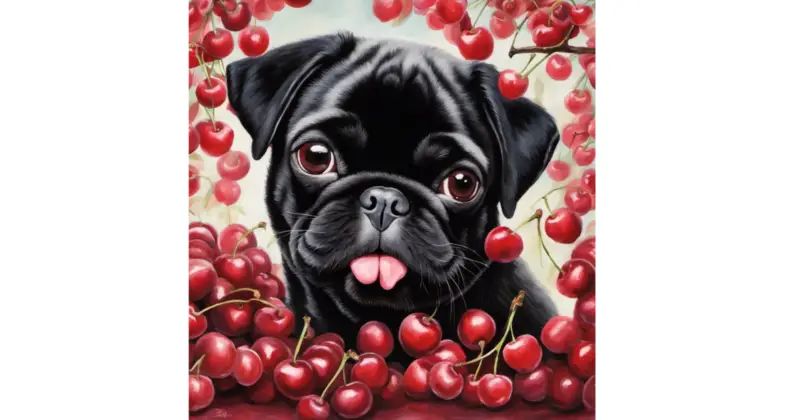
Some fruits, like apples and bananas, are known to be safe and beneficial for pugs, as they provide essential vitamins and minerals without posing significant health risks. However, cherries can be a different story due to the potential hazards associated with certain parts of the fruit.
Gaining insight into this topic will help you make informed decisions about whether or not cherries should be part of your pug’s treat repertoire.
Contents
Table of Contents
Understanding Pug’s Dietary Needs
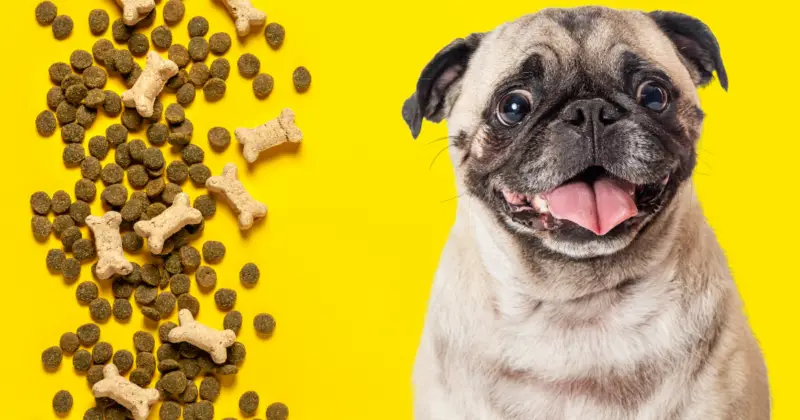
Importance of Balanced Diet
A balanced diet is essential for pugs to maintain their overall health and well-being. Like other dogs, pugs require a mix of proteins, carbohydrates, fats, vitamins, and minerals in their diet. Proteins are necessary for the growth and repair of body tissues, while carbohydrates provide energy for daily activities. Fats are essential to maintaining a healthy coat, and vitamins and minerals are vital for various body functions.
Get The Free Food Eating Guide That Keeps My Pug Happy and Playful Even at 13 Years Old
100% Beginner Friendly & Lists Real Foods Your Pug Can Actually Eat!
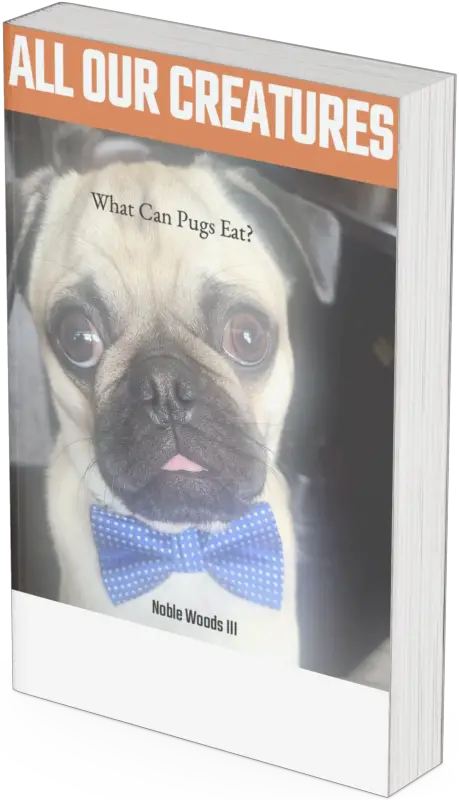
It is important to feed pugs a diet that combines the right amount of all these essential nutrients. Feeding them dog food that is specifically designed for the breed, like Royal Canin Breed Health Nutrition Pug Dry Dog Food, ensures that your pug receives a balanced diet catered to their unique needs.
Impact of Diet on Pug’s Health and Weight
A pug’s diet significantly impacts its overall health and body weight. A diet that is rich in nutrients and well-rounded will help your pug achieve and maintain a healthy weight, while a diet lacking essential nutrients can lead to unhealthy weight gain and various health issues.
Obesity is a common issue in pugs, so monitoring their caloric intake and providing them with a well-balanced diet and regular exercise to maintain a healthy weight is crucial. Offering fruits and vegetables as occasional treats, such as blueberries or carrots, provides them with additional vitamins and minerals without giving them excess calories.
Keep an eye on your pug’s body condition and adjust their diet accordingly to maintain their health and well-being. Regular veterinary checkups are crucial to ensuring your pug stays healthy and receives proper dietary recommendations. Lastly, always consult your veterinarian for specific dietary advice tailored to your pug’s individual needs.
The Nutritional Value of Cherries

Understanding Key Nutrients
Cherries are a delicious fruit that not only tastes good but also provides a range of nutrients that can be beneficial for both humans and dogs when fed properly. Some of the key nutrients found in cherries include:
- Antioxidants: Cherries are known for their high antioxidant content, which can help protect the body against free radicals and promote overall health.
- Melatonin: This naturally occurring hormone helps regulate sleep and can be found in cherries, potentially improving sleep quality.
- Vitamin A: Found in cherries, this vitamin supports healthy vision, immune function, and other processes in the body.
- Vitamin C: Cherries contain vitamin C, which is essential for a healthy immune system and helps maintain healthy skin and connective tissues.
- Fiber: Contributing to healthy digestion, cherries contain a good amount of dietary fiber.
However, it is crucial to note that cherries also contain sugar, and the pits, stems, and leaves can be harmful to dogs, especially pugs if ingested1. Therefore, it’s important to make sure that your pet is consuming cherries responsibly, with pits, stems, and leaves removed.
Caloric Impact on Pugs
When considering the nutritional value of cherries for pugs, it’s important to understand the overall caloric impact they might have. A 1 cup (138 grams) serving of unpitted cherries provides 87 calories, comprised of 22 grams of carbohydrates, 17.7 grams of sugar, and 3 grams of dietary fiber2.
Like any other dog breed, Pugs need to maintain a healthy weight to avoid health issues such as obesity, joint problems, and other complications. Therefore, owners should be cautious when feeding cherries to pugs due to their sugar content and overall calorie count. It’s essential to provide cherries in moderation and monitor your pug’s weight and overall health.
In conclusion, while cherries can be a source of beneficial nutrients, it’s crucial to administer them responsibly to your pug. By removing pits, stems, and leaves and keeping in mind the potential caloric impact, pug owners can ensure their furry friend enjoys cherries as part of a balanced, healthy diet.
Can Pugs Eat Cherries? Watch this
Can Pugs Eat Cherries
Is it Safe
Although cherries are a popular treat for humans, they are not considered safe for pugs to consume. Cherries themselves are not toxic to dogs, including pugs, but the pit, leaves, and stems of cherries contain cyanide, which can harm pugs 1. Cyanide is a toxic substance that can lead to serious health issues if ingested by dogs.
It’s important to note that the risk is not solely limited to cyanide, as the cherry pits also pose a choking hazard or could cause an intestinal blockage in pugs. Therefore, in the interest of your pug’s safety, it’s better to avoid feeding them cherries.
Why Not to Feed Them Cherries
A few reasons to avoid feeding cherries to your pug include:
- Cyanide toxicity: As mentioned earlier, the pit, leaves, and stems of cherries contain cyanide, which can be harmful to pugs if ingested1.
- Choking hazard: Cherry pits can pose a choking hazard for pugs, as their small size and shape can easily be lodged in their airway.
- Intestinal blockage: In addition to posing a choking hazard, cherry pits can cause an intestinal blockage, which may require emergency veterinary care.
Instead of feeding your pug cherries, consider providing them with safer fruit alternatives like blueberries or peeled and pitted mangoes, which are both healthy and safe for pugs to enjoy.
What Makes Cherries Potentially Harmful
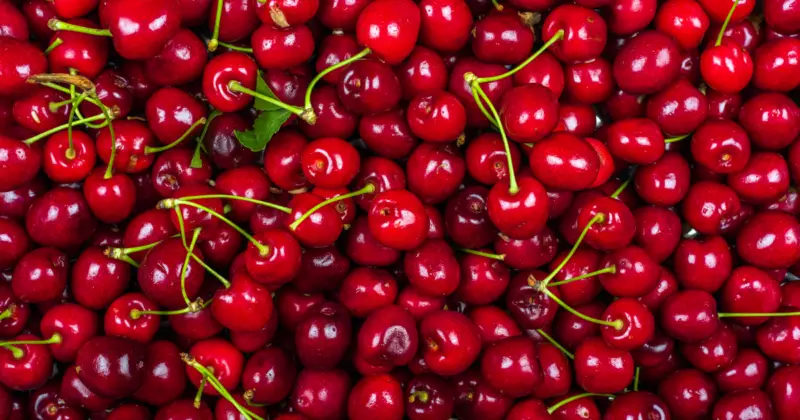
Cyanide Toxicity
Cherries can be potentially harmful to pugs due to the presence of cyanide in the pits, stems, and leaves of the fruit 1. While the fruit itself is not toxic, cyanide is a poisonous compound that can be lethal if consumed in large enough quantities. Pugs, like other dogs, are more susceptible to cyanide toxicity than humans, making cherries a dangerous treat for them.
Risks Associated with Cherry Seeds
Another potential risk that cherries pose to pugs is the cherry seed itself. Cherry seeds can cause choking hazards when ingested, especially for smaller dog breeds like pugs. Additionally, cherry seeds can possibly lodge themselves in a dog’s digestive tract, causing intestinal obstruction 2. To mitigate these risks, removing the pits, stems, and leaves is crucial before allowing your pug to consume cherries.
When it comes to feeding cherries to pugs, taking the necessary precautions is important because of the inherent risks associated with cyanide toxicity and cherry seeds. By preparing cherries safely, you can ensure that your pug remains healthy and happy.
Possible Health Consequences in Pugs
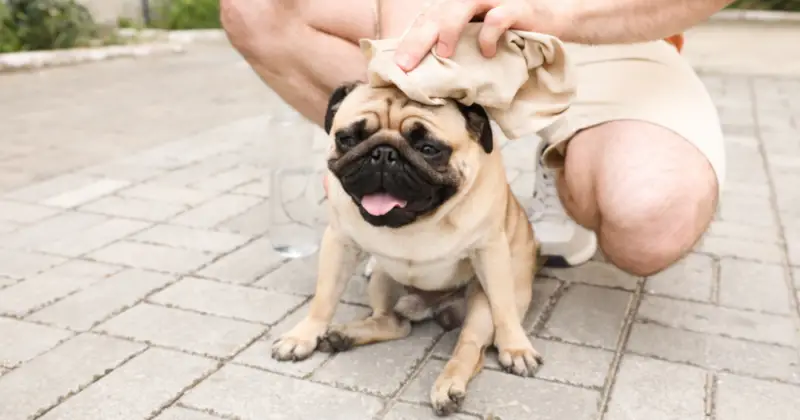
Gastrointestinal Distress and Cherry Consumption
Cherries can cause gastrointestinal distress in pugs, including vomiting and diarrhea. The digestive system of pugs is not suited to handle the pits, skin, and stems of cherries, which can lead to an upset stomach. In some cases, cherries can cause intestinal blockage, a more severe issue that may require immediate veterinary attention.
It’s important to monitor your pug closely after consuming cherries, watching for signs such as:
- Vomiting
- Diarrhea
- Abdominal discomfort or pain
- Lethargy
Long-Term Health Risks
While occasional cherry consumption might not immediately affect a pug’s health, long-term ingestion can cause more significant health issues. Prolonged exposure to cherries, especially their pits, stems, and leaves, can lead to cyanide poisoning. Cyanide is a toxic substance found in these parts of the cherry that can be dangerous and even fatal if consumed in large quantities.
To minimize the risk of long-term health problems related to cherry consumption in pugs, it’s best to avoid feeding them cherries altogether. Opt for safer alternatives like apples, blueberries, or carrots, which provide essential nutrients without the risks associated with cherries.
Remember to consult your veterinarian if you notice any concerning symptoms after your pug consumes cherries or any other potentially toxic food.
Safe Fruit Alternatives for Pugs
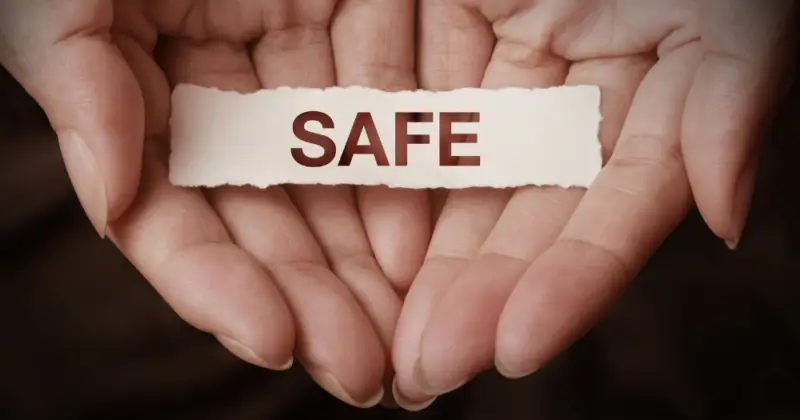
Choosing Safe Fruits
When selecting fruits for your pug, it’s essential to choose those that are both safe and healthy. Some great fruit options for pugs include apples, bananas, blueberries, and strawberries. These fruits are rich in vitamins and nutrients while being low in calories, providing a healthy and tasty snack for your beloved pet.
Apples are high in vitamins A and C and provide a good source of fiber. However, you should avoid feeding apple seeds to your pug, as they contain traces of cyanide.
Bananas are a sweet treat that also contains potassium and vitamin C, giving your pug a nutrient-rich snack.
Blueberries are low in sugar and calories and are packed with antioxidants, making them an excellent treat for your pug.
Strawberries are another low-calorie treat, containing essential nutrients and antioxidants.
Preparing Fruits for Your Pug
When serving fruits to your pug, make sure to prepare them to ensure their safety and enjoyment properly. Remove any inedible parts, such as seeds or pits, as they can be harmful to your pet.
For apples, be sure to remove the core and seeds before offering them. You can slice the apple into bite-sized pieces, making it easy for your pug to eat.
When offering bananas, peel them and cut them into small chunks. This will make it easier for your pug to chew and digest.
When giving your pug blueberries, offering them fresh or frozen is best. You can rinse the blueberries and serve them as a whole or mash them for easier consumption.
Strawberries should be rinsed and have their leaves removed. You can offer them whole or sliced, depending on the size of the strawberry and your pug’s preference.
Choosing safe fruits and preparing them properly can give your pug a healthy and delicious snack. Always limit the amount of fruit you offer to avoid overfeeding, and remember to consult your veterinarian if you have any concerns about your pug’s diet.
Consulting a Veterinarian Before Introducing New Foods

Why a Vet Consultation is Necessary
Before feeding your pug cherries or any other new food, it’s essential to consult with your veterinarian. A vet can provide personalized guidance based on factors such as your dog’s age, health history, current health conditions, and diet. Although some foods might be suitable for one dog, they may not be good for another, especially for dogs on prescription diets.
Knowing the Signs of Food Intolerance
Being aware of the signs of food intolerance can help you identify any potential issues when introducing new foods to your pug. Common symptoms of food intolerance in dogs include:
- Vomiting
- Diarrhea
- Itchy skin
- Ear infections
- Increased scratching, licking, or chewing of the skin
If you notice any of these symptoms or other signs of distress after giving your pug new food, contact your veterinarian immediately. They can help determine the cause and provide appropriate treatment. Remember to always consult your vet before introducing new foods to your pug’s diet to ensure their safety and well-being.
FAQs: Can Pugs Eat Cherries?
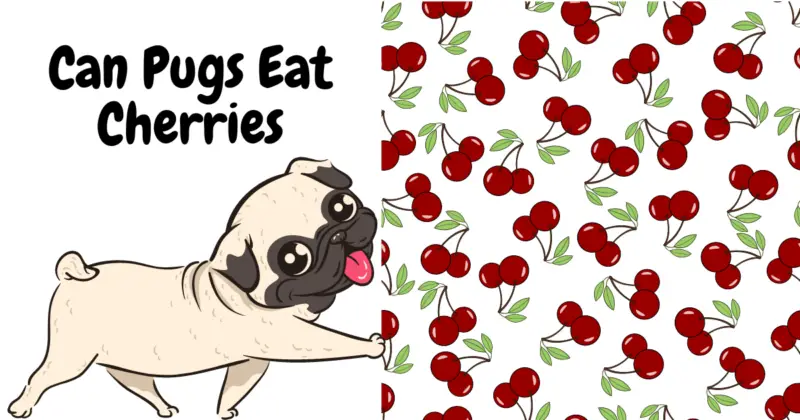
Are cherries without pits safe for pugs?
Cherries without pits can be safe for pugs in moderation, but it is essential to remove all pits, stems, and leaves before offering them to your dog. These parts of the cherry plant contain substances that can be harmful to dogs. Make sure to monitor your pug for any adverse reactions after consuming cherries.
What are the dangers of pugs consuming cherry pits?
Cherry pits contain cyanide, a toxic substance that can cause cyanide poisoning in dogs if ingested in large quantities. Symptoms of cyanide poisoning include trouble breathing, red gums, and dilated pupils. If your pug consumes cherry pits, contact your veterinarian immediately for further instruction.
Is cherry pie or jam harmful to pugs?
Cherry pie and jam can be harmful to pugs as they usually contain high amounts of sugar and other ingredients that may not be suitable for dogs. It’s best to avoid feeding your pug cherry pie or jam and instead offer them dog-safe treats and snacks.
Can pugs eat maraschino cherries?
Maraschino cherries may not be the best treat for pugs, as they are often processed with sugar and artificial coloring. These ingredients can be harmful to dogs and may cause digestive issues. It is better to stick with dog-friendly treats that do not contain added sugars or artificial ingredients.
What are the effects of pugs eating dried cherries?
Dried cherries may pose a similar risk to pugs as fresh cherries, especially if they still contain pits. If the pits have been removed, dried cherries can be safely consumed in moderation, but it is essential to monitor your pug for any adverse reactions. Be cautious of added sugars in dried cherries, which can be harmful to dogs.
What to do if a pug has eaten cherries?
If your pug has eaten cherries, especially with pits, stems, or leaves still attached, monitor them for signs of cyanide poisoning, such as trouble breathing, red gums, and dilated pupils. Contact your veterinarian immediately if you notice any of these symptoms or if you are concerned about your pug’s wellbeing after consuming cherries.

